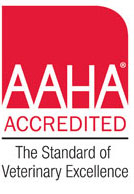Leptospirosis bacterial infection is a zoonotic (transmittable to human) which causes systemic serious illness in humans & dogs that can cause organ failure & ultimately death.
Leptospira spirochete bacteria is mainly prevalent in subtropical, tropical, and wet environments. Where the temperature is moderate to warm. Lepto bacteria can spread marshy/muddy areas which have stagnant surface water and are frequented by wildlife. Heavily irrigated pastures are also common sources of infection. Infection rate for domestic pets has been increasing in the Canada & US with infections occurring most commonly in the fall season due to global warming. Dogs will typically come into contact with the lepto bacteria in infected water, soil, or mud, which was contaminated by urine of infected animals or wild life.
Lepto can be asymptotic or have very vague symptoms which be easily misdiagnosed for other diseases in human or canines.
Younger human or animals with less developed immune systems are at the highest risk for severe complications or death.
Symptoms can be difficult to diagnose & very different in human. For more information about the infection in human please contact your physician.
Early symptoms in canines
Acute fever
Server lethargy
Reluctancy to move
Stiffness in muscles, joints, stiff gait
Loss of appetite
Increased thirst and urination, may be indicative of chronic renal (kidney) failure, progressing to inability to urinate
Acute dehydration
Vomiting, possibly with blood
Diarrhea – with or without blood in stool
Bloody vaginal discharge
Speckled red gums (petechiae)
Yellow skin and/or whites of eyes –
Anemia
Spontaneous acute cough
Difficulty breathing, fast breathing, arrhythmia
Swelling of the mucous membrane
Mild swelling of the lymph nodes
Diagnosis;
A complete blood chemistry profile, a complete blood count, a urinalysis, an electrolyte panel, and a fluorescent antibody urine test are the effective tools to diagnose lepto. Urine and blood cultures will also be ordered for examining the prevalence of the bacteria. A microscopic agglutination test, or titer test, will also be performed to measure the body’s immune response to the infection, by measuring the presence of antibodies in the bloodstream. This will help to definitively identify leptospira spirochetes and the level of systemic infection.
Treatment:
If you have a positive diagnosis it’s highly recommended to implement barrier nursing techniques which includes using disposable latex gloves at all times when handling the sick pet or human. Discard or disinfect any material, instrument or surfaces which came in contact with the sick pet or human.
Hospitalization & Inter-venous fluid therapy are crucial for treatment of this life threatening Disease. Penicillins can be used for initial infections, but they are not effective for eliminating the bacteria once it has reached the carrier stage. Tetracyclines, fluoroquinolones, or similar antibiotics will be prescribed for this stage, since they are better distributed into the bone tissue. Antibiotics will be prescribed for a course of at least four weeks. Some antibiotics can have side effects that appear serious, especially those drugs that go deeper into the system to eliminate infection. Be sure to read all of the warnings that come with the prescription, and talk to your veterinarian about the indications you will need to watch for. Prognosis is generally positive, barring severe organ damage.
Living with a lepto positive pet
Finally, if you do have other pets or children in the home, they may have been infected with the leptospira bacteria and are not yet showing symptoms. It may be worthwhile to have them (and yourself) tested for the presence of the bacteria. And, it is important to keep in mind that leptospires may continue to be shed through the urine for several weeks after treatment and apparent recovery from the infection. Appropriate handling practices will be the best prevention of the spread of infection, or of reinfection
A vaccination for the prevention of the leptospirosis infection is available in some areas. Your veterinarian can advise you on the availability and usefulness of this vaccine. Make sure to inspect kennels before placing your dog in one – the kennel should be kept very clean, and should be free of rodents (look for rodent droppings). Urine from an infected animal should not come into contact with any other animals, or people.
keep it isolated from children and other pets, and you will need to wear protective latex gloves when handling your dog in any way, or when handling fluid or waste products from your dog. Areas where your dog has urinated, vomited, or has possibly left any other type of fluid should be cleaned and disinfected thoroughly with iodine-based disinfectants or bleach solutions. Gloves should be worn during the cleaning process and disposed of properly after.
Sources:
Sources
JF McEwn B. Taylor J et DVM resurgence of leptospirosis in dogs in Ontario
Ward MP Glickman LT Dr. C. J Brown prevelance of lepto
In North America
Moore GE Greene DVM university of Michigan veterinary college

